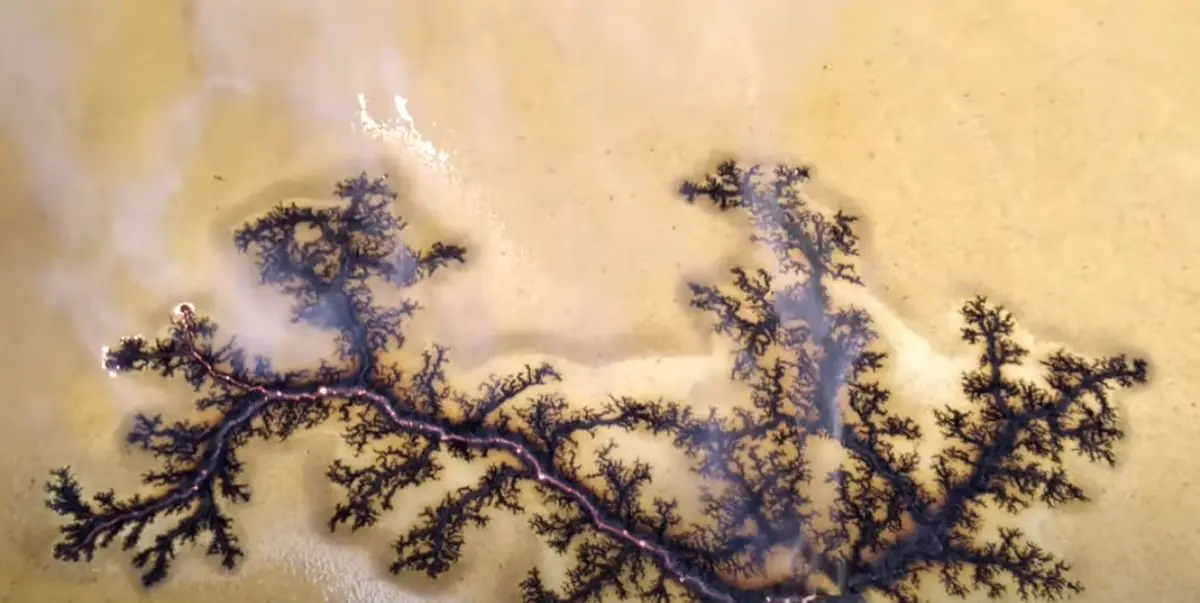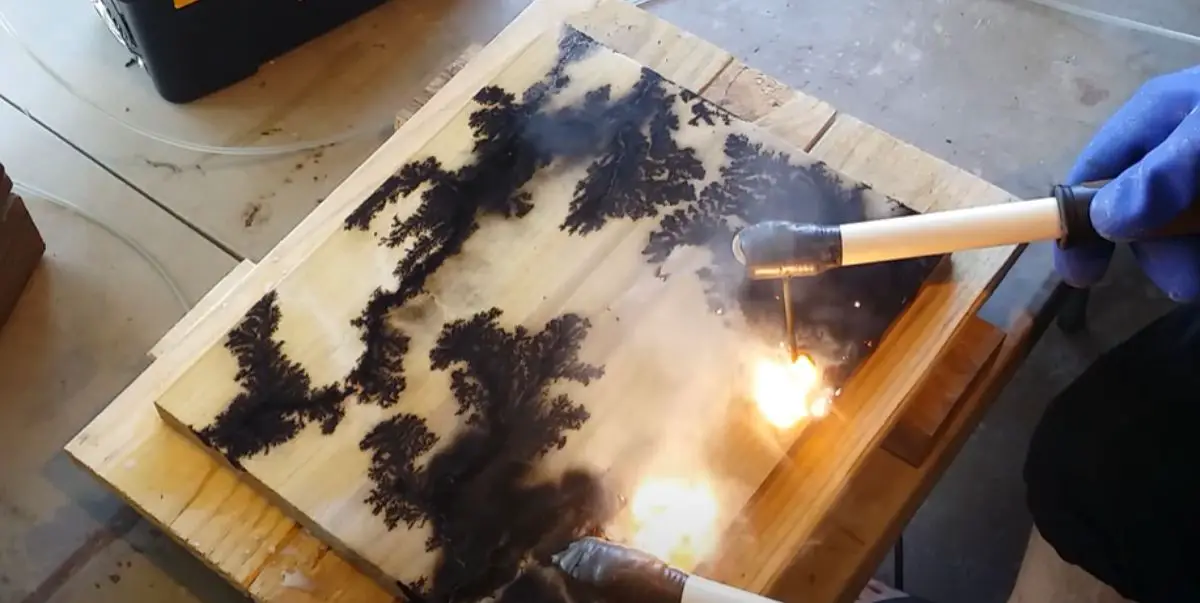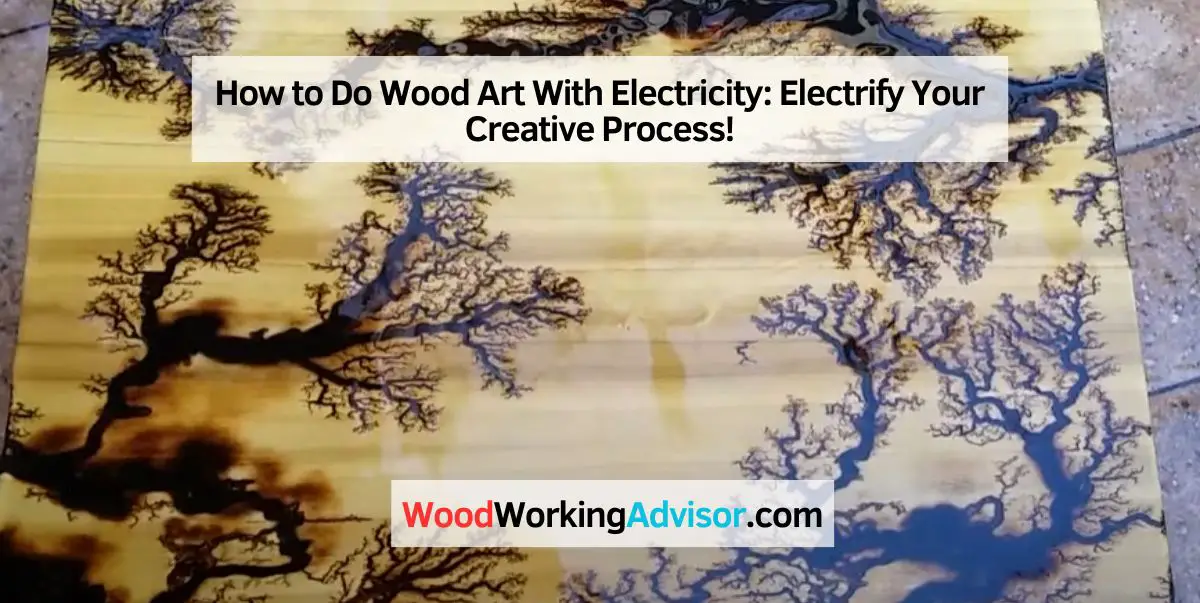Create stunning wood art with electricity by using a technique called Lichtenberg burning. In this process, electrically conductive patterns are burned onto the wood surface, resulting in unique and mesmerizing designs.
Choosing The Right Tools
Discover how to create stunning wood art using electricity. Learn about the best tools and techniques to make your projects shine. Let your creativity shine through the power of electricity!
When it comes to creating stunning wood art with electricity, choosing the right tools is absolutely crucial. The tools you use can make all the difference in the outcome of your electrifying art project. In this section, we will explore the key factors you need to consider when selecting the tools for your wood art with electricity journey.
Selecting The Best Wood For Electrifying Art
One of the first steps in creating wood art with electricity is selecting the perfect type of wood. Not all types of wood are suitable for this art form, so it’s essential to choose a wood that can handle the electrical current without compromising its structural integrity. Here are some of the best wood options for electrifying art:
- Basswood: This type of wood is known for its fine grain and soft texture, making it easy to work with. Basswood is also a great option as it can hold up well to the electrical current.
- Maple: Maple wood is known for its durability and strength, making it an excellent choice for wood art with electricity. Its smooth surface allows for intricate carving and engraving.
- Walnut: Walnut wood offers a rich, dark color and a beautiful grain pattern, making it a popular choice among wood artists. It is also a sturdy wood that can withstand the electrical process.
- Cherry: Cherry wood is highly regarded for its warm color and stunning grain. It is a dense wood that can handle the electrical current, making it ideal for electrifying art projects.
Essential Electrical Tools And Equipment
To embark on your wood art with electricity journey, you will need a few essential electrical tools and equipment. Here’s a list of what you’ll need:
- Power Supply Unit (PSU): This is the heart of your electrifying art setup. A PSU converts and regulates the electrical current to ensure a safe and steady flow of electricity.
- Electrodes: Electrodes are used to create the electrical pathway between the wood and the power supply. Copper or graphite electrodes are commonly used for their conductivity.
- Clamps and Holders: Clamps and holders help secure the wood and electrodes in place during the electrifying process. These ensure stability and safety during the project.
- Insulated Gloves: Safety should always be a priority when working with electricity. Insulated gloves provide protection against electrical shocks, allowing you to work confidently and safely.
- Router or Dremel Tool: These tools are used to carve, shape, and create patterns on the wood surface. They allow for precise and intricate designs in your wood art.
Remember, when working with electricity, it’s crucial to prioritize safety at all times. Make sure to educate yourself on proper usage and safety precautions for each tool and equipment. By choosing the right tools and materials, you’ll be well on your way to creating mesmerizing wood art with electricity.

Preparing Your Workspace
Prepare your workspace for wood art with electricity by setting up a well-ventilated area, wearing safety gear, and using proper tools and equipment. Ensuring a clutter-free and organized workspace will help you work efficiently and safely while creating stunning wood art using electricity.
Creating A Safe And Functional Studio Space
Preparing your workspace is essential before delving into wood art with electricity. A well-organized and secure studio space sets the foundation for a successful project. Here are some key steps to follow:
Organizing Your Tools And Materials
Begin by organizing your tools and materials in a logical manner, ensuring easy access during your wood art projects. Consider using a tool chest or pegboard system to keep your workspace clutter-free. Group similar tools together and label them for convenience.
Ensuring Good Lighting
Proper lighting is crucial to accurately see the details of your wood pieces. Place bright, flicker-free lighting sources strategically around your workspace. This will help reduce eyestrain and improve overall visibility, allowing you to work more effectively.
Having Adequate Ventilation
Fumes from certain wood treatment products or electrical equipment can be harmful when inhaled. Therefore, having proper ventilation in your studio space is important. Ensure good airflow by opening windows or using fans to keep the air fresh and remove any potential toxins.
Implementing Safety Measures
Safety should always be a top priority when working with electricity. Make sure your workspace is equipped with fire extinguishers, first-aid kits, and clearly marked emergency exits. Additionally, install grounded electrical outlets and use surge protectors to prevent electrical hazards.
Creating A Comfortable Work Environment
Lastly, aim for a comfortable work environment. Arrange your workspace ergonomically, keeping in mind factors like chair height, table height, and footrests. This will help prevent discomfort and potential injuries caused by long hours of working in a strained position.
By meticulously preparing your studio space, you set yourself up for a smooth wood art with electricity experience, allowing creativity to flow without hindrance. Now that your workspace is ready, let’s move on to the next step: selecting the right tools and materials.
Electrifying Techniques
When it comes to creating wood art with electricity, electrifying techniques can add a unique and mesmerizing element to your creations. By understanding the basics of electricity and wood art, as well as exploring electrifying methods and effects, you can elevate your woodworking projects to a whole new level of creativity and innovation.
Understanding The Basics Of Electricity And Wood Art
Before diving into electrifying wood art, it’s crucial to have a grasp of the fundamentals of electricity and how it can be safely integrated into woodworking. Woodworkers should become well-versed in the principles of electrical conductivity and how different types of wood respond to electrical currents. Knowledge of electrical safety protocols and equipment is also paramount to avoid any potential hazards.
Exploring Electrifying Methods And Effects
Once you have a solid understanding of the electrical basics, it’s time to explore the myriad of electrifying methods and effects that can be achieved in wood art. This includes employing techniques such as Lichtenberg fractal burning, where high-voltage electricity creates intricate patterns in the wood, as well as using electricity to create custom patterns and textures through controlled electrical burns.
Finishing And Displaying Your Electrified Art
Discover how to create stunning wood art using electricity and showcase your creations with pride. Learn the step-by-step process of finishing and displaying electrified art in this informative guide.
Preserving And Finishing Electrified Wood Art
When it comes to preserving and finishing your electrified wood art, it’s essential to take the necessary steps to ensure its longevity and enhance its beauty. By following these guidelines, you can protect your artwork and showcase it for years to come.
Here are some tips for preserving and finishing your electrified wood art:
- Apply a protective finish: Start by applying a wood finish to protect the natural beauty of the wood and seal it from moisture and environmental factors. A clear polyurethane or varnish is an excellent choice for this purpose.
- Consider using epoxy resin: If you want to add a glossy and glass-like finish to your electrified wood art, epoxy resin is a fantastic option. It provides a durable and protective coating while accentuating the colors and textures of the wood.
- Sand and smooth the surface: Before applying any finish, ensure that the wood surface is smooth and free from any imperfections or rough edges. Use sandpaper to gently sand the surface and create a uniform finish.
- Protect against UV damage: If your artwork will be exposed to sunlight, consider applying a UV-protective finish. This will prevent the wood from fading and maintain the vibrancy of its colors over time.
- Choose a suitable finish for the electrical components: When finishing your electrified wood art, ensure that the protective coating you use does not interfere with the electrical components. Opt for finishes that are non-conductive and safe to use around electricity.
Showcasing And Presenting Your Finished Pieces
Once you have finished preserving your electrified wood art, you’ll want to showcase it in a way that highlights its unique qualities and captivates the viewer’s attention. Here are some ideas for showcasing and presenting your finished pieces:
- Select the right display method: Depending on the size and design of your electrified wood art, you might consider different display options. Wall-mounted displays, tabletop easels, or custom stands can all be suitable choices.
- Create a cohesive display: If you have multiple pieces of electrified wood art, think about how they can be displayed together to create a visually appealing arrangement. Consider factors such as size, color, and theme to create a cohesive and harmonious display.
- Use proper lighting: Lighting plays a significant role in showcasing your art piece effectively. Consider using spotlights or adjustable LED lights to highlight specific features or create dramatic shadows.
- Engage the senses: Make the viewing experience more interactive by incorporating elements that engage the senses. For example, add a small fan to create gentle movement within the art piece or incorporate ambient sounds to enhance the overall atmosphere.
Remember, the way you finish and present your electrified wood art can significantly impact how it is perceived by others. By following these guidelines, you can ensure that your artwork is well-preserved, aesthetically pleasing, and captivating when displayed.

Frequently Asked Questions On How To Do Wood Art With Electricity
How Do You Electrify Wood For Art?
To electrify wood for art, you can use conductive paint or wire. Apply the conductive paint or attach the wire to the wood, and then connect it to a power source or battery. This will create an electrified effect, enhancing the artistic appeal of the wood.
How Do You Burn Designs In Wood With Electricity?
You can burn designs in wood using electricity by using a wood burner tool. This tool has a heated metal tip that creates burn marks when in contact with the wood surface. By controlling the temperature and movement of the tool, you can create intricate designs on the wood.
Can Fractal Wood Burning Be Done Safely?
Fractal wood burning can be done safely by following proper safety precautions and using the right equipment. It is important to wear protective gear, work in a well-ventilated area, and use a properly functioning wood burning tool.
How Many Volts Needed For Fractal Burning?
Fractal burning requires high voltage, typically ranging from 2000 to 3000 volts.
Conclusion
Incorporating electricity in wood art adds a thrilling dimension to traditional techniques. By following safety protocols and experimenting with different methods, you can create stunning and unique pieces. Embracing the combination of wood and electricity opens up a world of creative possibilities, allowing for fresh and captivating art forms.
Explore this exciting art form and embark on a dynamic journey of crafting with electricity.


